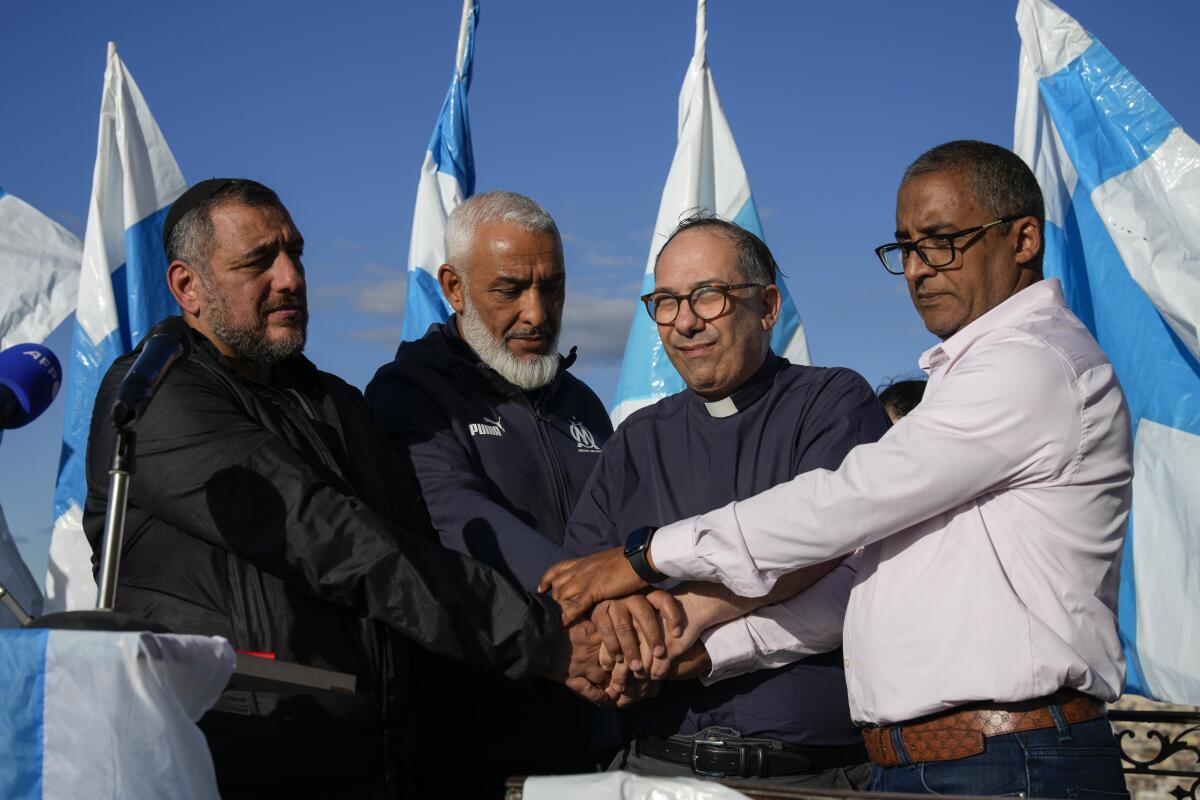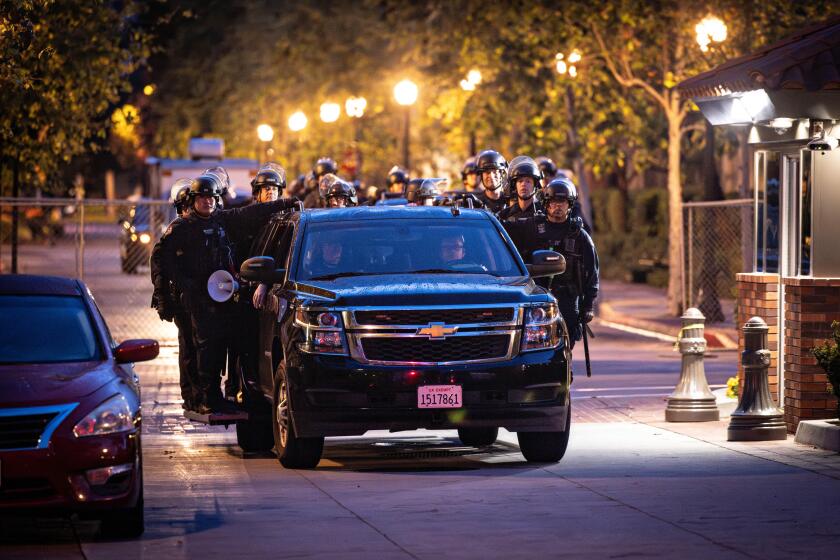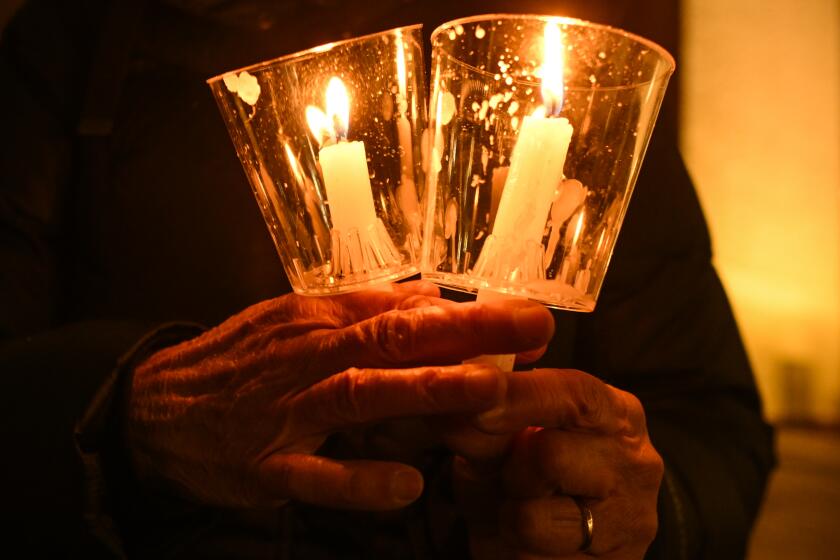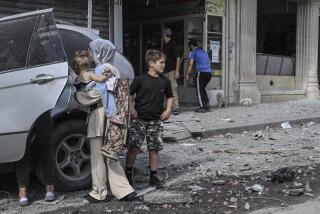Opinion: No, the Israeli-Palestinian divide is not unbridgeable. Here’s how I know

- Share via
One could be forgiven for assuming the world is on the brink of collapse. There is no shortage of negativity and polarization, even for those who don’t seek it.
Social media sets negativity and division as defaults. Politicians run on them. We pass through life in a guarded posture, primed to harden our hearts to strangers.
To choose a more sanguine and conciliatory path under these man-made conditions demands an almost delusional spirit of rebellion. And yet it is possible.
College presidents in the Vietnam era would have thanked their lucky stars to face the relatively low disruptions caused by student movements in 2024.
The reverberations of the war in Gaza have permeated borders beyond the river and the sea and bled into our streets, legislatures and universities. From Israel to the Ivy League, we’re shown the most extreme elements of each side, impressing upon the public gross generalizations and a false sense of unbridgeable division.
We spotlight one student’s hateful “Zionists don’t deserve to live” as sufficient to caricature pro-Palestinian protesters as invariably plagued by rank Jew-hatred and reverence for terrorists-turned-martyrs. We showcase a politician’s call to erase “the Gaza Strip from the face of the Earth” to smear supporters of Israel as cheerleaders for genocide.
Extremists who sabotage the very cause they purport to advance are common to all movements. To make them the moral of the story, however, only reinforces the notion that this conflict is beyond resolution. We resign ourselves to the cynic’s insistence that there is no hope of mixing oil and water.
But there is abundance in the land of milk and honey.
By feeling forced to pick a side, the whole world is now experiencing what has been my life struggle — deciding whether I’m Israeli or Palestinian (and getting backlash for whichever I choose).
Despite the magnification of the extremes, a collective of people occupies the center of the Venn diagram, where the two sides intersect and find commonality. I count myself among them.
I work with a diverse collective of progressive Jews focused on addressing antisemitism, with an emphasis on how anti-Jewish ideas and implicit biases affect conversations about Israel and Palestine. Underpinning our philosophy is the conviction that empathy for Muslims and Palestinians is part and parcel of the same for Jews and Israelis. As the grandson of a man who was once the sole Jewish member of parliament in pre-revolution Iran, I take Muslim-Jewish coexistence personally, even though I am not naive about its challenges.
At a time when people are fed a heavy diet of unconditional solidarity with their “side,” we promote cross-communal dialogue, unsettling as it might be, because there is liberation in engaging in spite of our disagreements. Rather than taking the institutional approach of arming people with clever talking points to “win” debates, we empower them with tools for engagement.
We literally meet people where they are, whether at UCLA’s Gaza solidarity encampment or campus Jewish associations. We ask questions such as “How has this conflict personally affected you?” and “Do you have family on the ground?” Personal connections can be sparked when conversations aren’t agenda-driven and strict adherence to message discipline isn’t enforced. We might find that we identify with a person’s lived experience, so that instead of seeing an adversary on the other side, we see a partner.
This is not to paint a Pollyanna-ish picture. Some reject dialogue, some divisions can’t be papered over and some do harbor hatred.
But I have facilitated conversations with people who believed Jews should be held responsible for the actions of the Israeli government but came to understand the harm in their stance. I have led talks in which people who said they weren’t capable of empathy for Palestinians came to appreciate how connected our futures are.
What ultimately binds people in the center of the Venn diagram is an understanding that Israelis and Palestinians lack the luxury to be prisoners of a scarcity mentality — the notion that there isn’t enough for both peoples. Expecting ideological uniformity of our allies is a delusion that impairs our ability to see the bigger picture. Regardless of external pressures, we remain anchored by the realization of the two peoples’ shared fate. There will be no exodus of Israelis or Palestinians from the holy land.
That sobering realization puts everything into sharp focus. Trivial differences are shelved to build partnerships that can graduate into political change.
Insisting on our own exclusive righteousness only inflames division, perpetuates the unjust status quo and serves the people in power who benefit from it.
For every person screaming that there are “no innocents in Gaza” or that “all Israelis are settlers,” there are others who center both peoples’ humanity. These are the Israeli and Palestinian activists, faith leaders and community organizers who take to the streets of Tel Aviv and the parks of New York to rally for what’s best not for one but for all, because they know there is no salvation for one without salvation for the other.
Look at the alternative: human beings held hostage, innocent people dying and starving, families grieving and hopeless.
The people should not pay for the sins of their leaders. The people want peace.
We have a choice between amplifying the attention seekers or the peace seekers, between broad coalitions or the shallow comfort of our ideological bubbles. We can serve as proof that being pro-Israeli doesn’t inherently mean you’re anti-Palestinian, and vice versa. We can acknowledge that one people’s miracle was another’s catastrophe. We can make room for the other’s narrative without compromising our own. We can choose the more sanguine path.
The change we long for is possible when we unite around a shared struggle to achieve collective liberation. Peace as we know it requires partners. And for peace to be made at the top, it must start at the grassroots.
Daniel Bral is a facilitator and writer on Israel-Palestine issues. @danielbral
More to Read
A cure for the common opinion
Get thought-provoking perspectives with our weekly newsletter.
You may occasionally receive promotional content from the Los Angeles Times.












